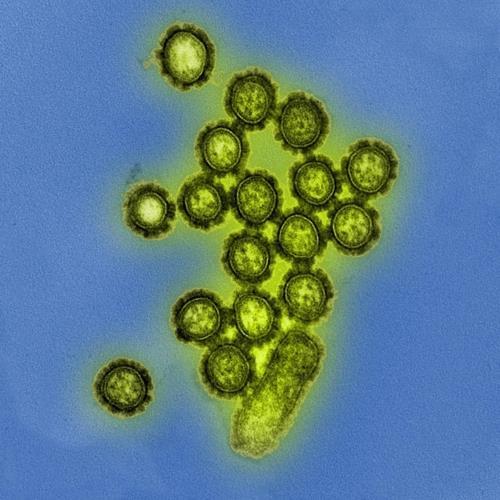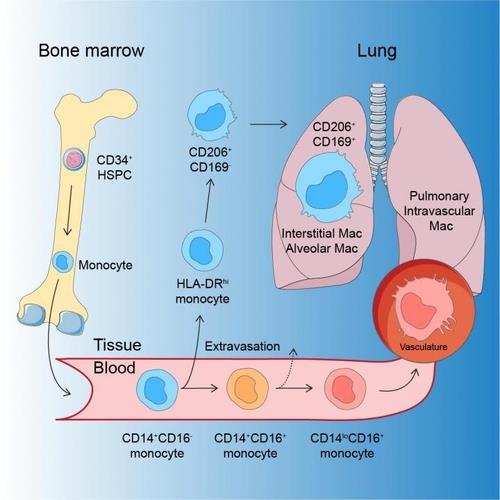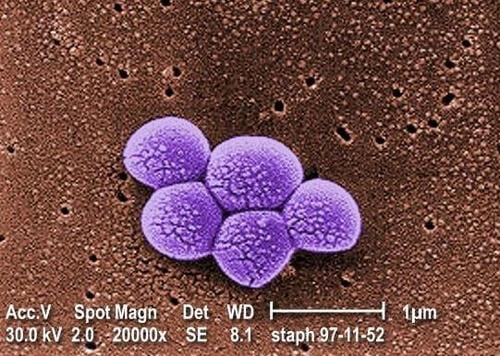Corona infection macrophage mutation, pneumonia outbreak
Inflammation suppression’experimental drug’ soon clinical trial… Journal’Nature’ paper
–
Acute pneumonia caused by the influenza (flu) virus or bacteria spreads widely to the lungs several hours after infection.
However, with antibiotic intensive treatment not too late, these pneumonia are usually controlled without going to the critical stage.
Of course, the body’s immune response also helps suppress inflammation.
However, a study found that pneumonia, which occurs in patients with novel coronavirus infection (Corona 19), has a completely different spread pattern and speed.
First of all, Corona 19 pneumonia did not spread as quickly as other pneumonia.
At the same time, several small lesions first appeared and then slowly spread over several days, sometimes taking weeks to do so.
In this process, it has also been found that lung immune cells, specifically macrophages and T cells, play a key role.
Researchers at Northwestern University, USA, who conducted this study, recently published a related paper in the journal Nature.
According to an outline of a paper published on the American Association for the Advancement of Science (AAAS) website (www.eurekalert.org) on the 14th, the spread of Corona 19 pneumonia was similar to the spread of small wildfires everywhere, engulfing the entire huge forest.
During this process, the lung tissue was damaged, followed by abnormal symptoms such as high fever and low blood pressure, and damage to other organs such as the kidneys, brain, and heart.
Scientists estimate that the case where Corona 19 pneumonia is more serious than regular pneumonia may be related to the spreading path of this long stretch of Corona 19 pneumonia.
 –
–
–
The research team extracted lung fluid from 86 patients with COVID-19 pneumonia and 256 patients with general pneumonia, which depend on oxygen respiratory system, and compared the immune cell type and expression level.
There are only a few research groups in the world to analyze the immune response of the lungs in corona19 patients.
This is because there is a great concern about the safety of the patient.
The research team found out how these immune cells cause inflammation by observing RNA and expressed proteins in immune cells isolated from lung fluid.
Through this process, macrophages and T cells were selected as therapeutic targets for severe Corona 19 pneumonia.
Usually, macrophages function to protect the lungs, but macrophages infected with the novel coronavirus have fueled the spread of infection throughout the lungs.
It is also possible to explain that the mortality rate of patients with corona19 with a severity dependent on oxygen respirators is lower than that of patients with similar general pneumonia.
Patients with COVID-19 pneumonia suffer from the disease longer, but the inflammation in the lungs itself was not as severe as regular pneumonia.
Therefore, the research team emphasizes that a medical system that can manage patients for a long time is more important than anything else in responding to Corona 19.
For example, if there are enough beds and medical personnel, the fatality rate can be tied to 20%, but if the medical system collapses, the fatality rate can jump to 40%.
 –
–
–
The research team predicts that even if many people get the vaccine in the future, Corona 19 will not disappear easily.
Associate Professor Ben Singer, co-chief author of the paper, said, “Researchers from our university as well as other institutions are seeing that the mechanism to evade the vaccine currently being vaccinated will occur in this rapidly mutating RNA virus.” It will help to develop a treatment that relieves the severity of 19.”
The research team is expected to begin clinical trials of an experimental treatment for COVID-19 pneumonia soon.
It is expected to inhibit the inflammatory response of macrophages and T cells and to repair damaged lung tissue.
“Our goal is to make Corona 19 a mild disease comparable to the flu,” said Scott Budinger, a professor of respiratory intensive care medicine, who led the study.
/yunhap news
–


![[국제]Developing countries that couldn’t buy vaccines turn to China’s vaccine [국제]Developing countries that couldn’t buy vaccines turn to China’s vaccine](https://www.ytn.co.kr/img/comm/ytn_sns_default.jpg)